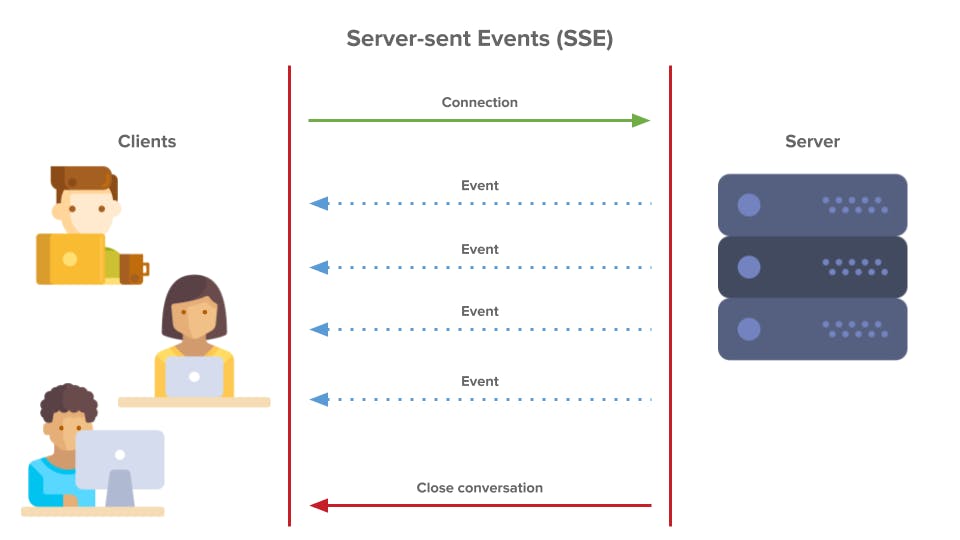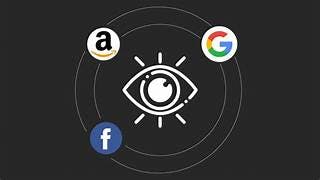
Unlocking the Web's Best-Kept computer Secrets: Ignored Topic That Shape Effective Development
In the constantly developing world of web development, Where new trends and technologies become popular and then Quickly lose their popularity. hidden gems are waiting to be discovered. While discussions often revolve around the latest frameworks and responsive designs, numerous topics deserve our attention, But these important things are still not talked about much in the world of web development. So let's explore this.
1. Server-Sent Events (SSE) for Real-Time Notifications:
In the dynamic world of web development, staying up-to-date with the latest information is crucial. Server-Sent Events (SSE) emerge as an often overlooked yet powerful tool for delivering real-time updates and notifications to users, creating seamless and engaging web experiences.
Server-Sent Events (SSE) is a technology that enables servers to push real-time updates to web browsers over a single HTTP connection. Unlike other real-time communication methods like WebSockets, SSE uses a unidirectional approach where the server can send data to the browser, but the browser cannot send data back to the server using the same connection.

2. Web Accessibility for Cognitive Disabilities
In the world of web development, Creating a website that is accessible to everyone is not just a moral responsibility but a legal requirement in many regions while discussion often center around physical disabilities and visual impairments, the topic of web accessibility for cognitive disabilities is frequently overshadowed, despite its significance in making the digital landscape
Let's think about going on a website that's hard to understand and has lots of confusing stuff. Now, imagine if you had trouble thinking and understanding things easily. Using that website would be frustrating and tough, right?
This is where cognitive accessibility comes in. It's about making websites easier to use for people who find thinking and understanding things a bit more challenging. By doing this, we're making sure that everyone, no matter how they think, can use websites without feeling overwhelmed or frustrated.
So, just like we build ramps for people who use wheelchairs, we're also making digital ramps that help people with cognitive differences use the web more easily. It's all about being fair and making sure everyone can enjoy the online world.

3. Dark Pattern and Ethical Design:
Dark patterns are user interface design choices that intentionally manipulate or deceive users into taking actions they may not have intended. They often exploit psychological biases to push users towards certain decisions, which might benefit the company or website owner but harm the user experience.
Type of Dark pattern:-
1) Misdirection:-
Making it difficult for users to cancel or unsubscribe from services.
2) Forced Continuity:-
Making it difficult for users to cancel or unsubscribe from services.
3)Roach Motel:-
Easy to get into, hard to get out of. For example, signing up for a service is simple, but canceling the subscription is intentionally convoluted.
4) Sneak into the Basket:-
Adding extra items to the user's cart without their consent.
5)Privacy Zuckering:-
Tricking users into sharing more information than they intended.

4. Web Performance Metrics Beyond Page Load Speed.

Web performance metrics are not just about how quickly a webpage loads at the beginning. They also look at different things that together make the user's experience better These metrics show us how fast and well a webpage works when we do things on it. Here are some important metrics that are more than how fast a page loads:
a) Time to Interactive(TTI)
TTI tells us the time it takes for a page to become fully interactive. let's take a simple example, Imagine you're visiting a website, and the page looks loaded, but you can't click on buttons or type in a field yet. that's where Time to Interactive (TTI) comes in. TTI measures the time it takes for a webpage to become fully ready for you to interact with it. It's not just about making sure everything on the page is responsive and works as it should.
b) First Contentful Paint (FCP) and Largest contentful paint (LCP)
FCP measures how long it takes for the first content element (text, image, or other) to appear on the screen after a user requests a page.
LCP measures the time it takes for the largest content element (often an image or video)to be visible within the viewport.
c) Cumulative Layout Shift (CLS)
Have you ever been on a webpage where things suddenly move around as you're trying to click on them? it's like playing a game of whack-a-mole with buttons that keep shifting position. That's where Cumulative Layout Shift (CLS) comes in.
CLS gives a score to how much these unexpected movements happen. If the score is low, it means the webpage is pretty stable, and things don't jump around much. If the score is high, it means you're more likely to experience those annoying shifts.
d) Time to First Byte (TTFB)
TTFB measures the time it takes for the browser to receive the first byte of data from the server after requesting a page. It provides insight into server responsiveness and network performance.
e) Time to Render(TTR)
Time to Render (TTR) is like waiting for a picture to appear after you take it. When you snap a photo, you want to see it quickly, right? Similarly, When you open a webpage, TTR is about how fast you can see the stuff on the page.
